This week we’re rerunning one of your favorite posts from our archives.
Losing Money With Your Volume Pricing Model? was originally published in February 2011.
If you’ve ever gone to a grocery store (I hope you have…), you’ve clearly seen the effect of volume pricing on your purchasing motivation. There are often drastic discounts offered to buy a larger package of ground beef, a case of soda or a larger tube of toothpaste. Why? Because the manufacturer is willing to take a lower per-unit price in order to move more quantity.
In the digital goods world, this business tactic is made all the more compelling because the cost of selling one additional unit is very low compared to physical goods. Producing and selling another license key for a piece of software or another virtual gift in an online community results in very little additional cost when compared to producing another package of beef, can of soda or tube of toothpaste. Because of this high profit margin, digital goods companies frequently offer their products in volume.
However, did you know that there are different methods for calculating volume discount prices — and they each have different financial effects? We’ve identified three different volume pricing models for digital goods to help you evaluate your current strategy and make sure it is working for you.
1. All-Units
The first pricing model we’re going to talk about is the very common “all units” model. In this model, the price of each unit is equal to the unit price for the cheapest volume tier reached. The following table illustrates a typical all units volume pricing model:

This graphic demonstrates what the per-unit cost is as the customer selects a higher volume:
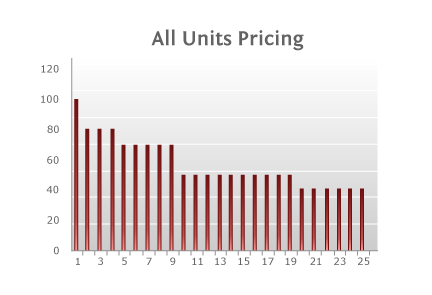
As you can see from the graphic, the price per unit depends on the number of units the customer chooses to buy. If the customer selects two, each unit costs $80. If the customer selects 8, each unit costs $70. On first blush, the pricing model seems logical. The more that the customer buys, the cheaper the per-unit price become. However, there are a few quirks that become apparent when looking at the total cost compared to the number of units:
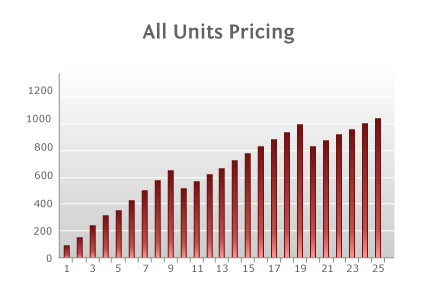
As you can see, the total cost drops between buying nine and 10 units as well as between 19 and 20. You may decide that enticing the customer to buy 10 instead of nine is exactly the behavior that you want, but it actually results in you making less money. Who really wants that? One solution to this problem (if you want to stick with the simplicity of the all-units pricing model) is to narrow the discount gap between units. By instituting a smaller difference between the per-unit price levels, this step down will narrow and can even reverse to have no drop at a higher number of units.
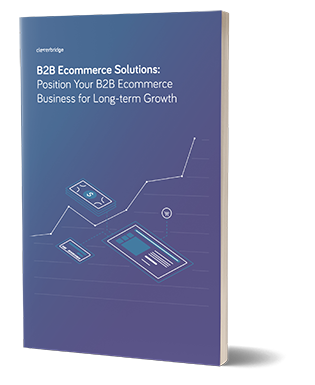
Advantages:
- The all units model is easy for customers to understand.
- Assuming a price is set in the displayed currency, you can always show customers a marketing-friendly per-unit price.
Disadvantages:
- The per-unit price is lower than the per-unit price when offering an incremental discount (see incremental model), hence the total price is also lower. So you may make less money by using this model.
2. Incremental Model
Another way to utilize volume pricing is the incremental model, which applies a discount only to units ordered above a specific price tier. We’ll use the same pricing model as before:
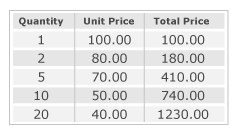
The following graphic shows the price per unit for each total up to 25:
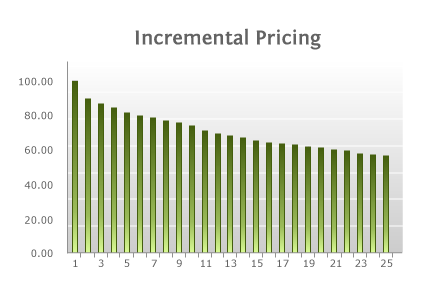
As you might expect, if one unit is chosen, the cost is merely the price tier for one, or $100. However, if the customer selects two units, the first unit costs $100 while the second unit costs $80. This results in a total cost of $180 for two units, or $90 per unit. Similarly, if a customer selects five units, this is one unit at $100, three units at $80 and one unit at $70, for a total of $410 and a per-unit cost of $82. The incremental volume pricing model, unlike the all-units volume pricing model, does not experience any step function drops in total price as more units are selected, as you can see in the following graphic:
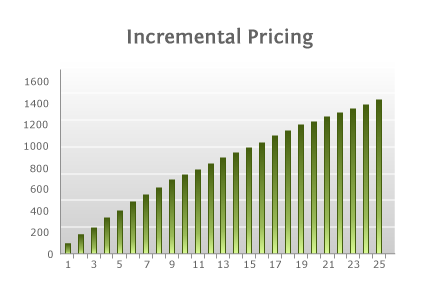
This model results in a nice smooth graph of ever increasing values, which means no tricky step-down points. However, the explanation of what the price is for each unit is not as simple as the all units discount. Keep this in mind if you choose this model.
Advantages:
- There are no step-down points. So, you won’t run into a situation where you are selling more, but actually taking in less revenue (like in the all units model).
Disadvantages:
- The pricing logic is more difficult for customers to understand than the all-units model.
- The per-unit price displayed to customers will often not be a marketing-friendly price.
3. Package Pricing
The third volume pricing option is the package pricing model. In this more complex model, customers buy packages of units at a fixed price. Assuming the volume price breaks used previously, the following table lists the total price for each specified quantity, like two units at $80 per unit equals $160, or ten units at $50 per unit equals $500.
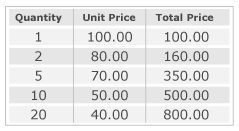
The tricky part of this model is if a customer wants a quantity that does not match one of the pre-defined packages. In this case, the unit price is based on the most favorable package combination. For example, if a customer wants 15 units, a package of 10 for $500 and a packages of five for $350 results in a total cost of $850. As you can see in the following graphic, the package pricing combination results in a non-standard pricing structure per unit.

Looking closely at the graphic, it becomes apparent that the best per-unit prices are at the fixed package levels. When the total price is plotted against the quantity purchased, the chart looks similar to the All-Units chart:

There is a step-function down at the fixed package amounts. One impact of this fact is that customers may increase or decrease their purchases to reach specific packages. Atlas.ti provides a good example of this type of pricing model.
Advantages:
- Like all of the volume pricing models, package pricing entices customers to buy larger bulk to receive a better discount.
Disadvantages:
- It can be difficult to explain to customers.
- This model may result in customers decreasing unit purchases in order to fit specific package.
Model Comparison
The following charts shows a comparison of each model compared to the others based on per-unit price and total price.


When should you use one model over another? How do you decide which to use?
One way to select which model to use it to look at the average quantity per order. At a smaller order quantity, the unit price using any model is pretty similar, but as the unit quantities grow, the incremental model maintains higher unit prices. For every price break, the difference in price between the models grow larger.
Consider the limits of your existing shopping cart display if you are considering using one of the more complicated volume pricing models (incremental or package pricing). It is very important for a customer to easily understand your discounting method. If the cart display cannot clearly break down the discounting thresholds and price points, you will be far less likely to sell multi-quantity orders.
Keystone
Take a good look at the pros and cons of the different volume pricing models so you can choose the one that truly works best for your customer base and the product(s) you’re selling.
Does your company use volume pricing and if so what is your volume pricing strategy? Are there any other volume pricing models that you have seen?

Great article on Volume pricing. I am grappling with this issue in detail for our agents who are running business planning events. It seems like a real trade off between simplicity and profitability. I am not sure I can live with the price drop caused by banding the unit costs.
I really like the way your graphs clearly explain the payment/pricing profile.